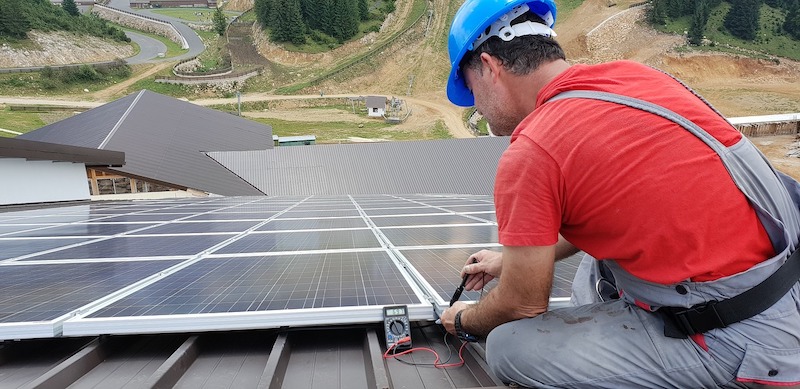The Canada Green Building Council (CaGBC) recently unveiled an updated version of its Zero Carbon Building Standard.
Version 2 incorporates lesson from over 20 zero carbon projects that represent a wide spectrum of building types including schools, offices, commercial offices, and industrial buildings. “These projects demonstrate that the industry is ready to raise the bar on expanded requirements for embodied carbon and energy efficiency,” according to a CaGBC news release.
The updated standard aims to get more buildings to zero, faster, by providing more options for different design strategies, by recognizing high-quality carbon offsets when necessary and providing new tools to help design zero carbon buildings and measure results, the release says. The standard provides two pathways for any type of building project—new construction or retrofit— to get to zero carbon. The standard provides a framework for verifying that buildings have achieved zero carbon, and it must be revisited annually.
Among the new requirements:
· Projects must now reduce and offset carbon emissions for the building’s life-cycle including the manufacture and use of construction materials.
· Best practices must be followed to minimize potential leaks of refrigerants.
· More stringent energy efficiency and air-tightness requirements were added.
· Projects must demonstrate two innovative strategies to reduce carbon emissions.
Related Stories
| Dec 15, 2011
Dayton, Ohio schools saving $2.6 million annually by building to LEED
On average, green schools save about $100,000 a year on operating costs, including energy and water savings.
| Dec 15, 2011
Building to LEED standards can pose new risks for construction workers
Workers on these projects suffer a 24% increase in falls to lower levels during roof work, which researchers attributed to the installation of solar panels, and a few other risks.
| Dec 15, 2011
NRDC charges Maine governor with weakening green wood requirement
The FSC program is administered through the Leadership in Energy and Environmental Design (LEED) and requires wood to be harvested in a sustainable way.
| Dec 15, 2011
Post-tornado, Tuscaloosa seeks to create walkable urban, retail areas
Block sizes initially were limited to a maximum perimeter of 1,750 feet, with no side of the block being longer than 500 feet.
| Dec 15, 2011
Allentown, Pa. city council asked to repeal union-friendly law
The mayor of Allentown, Pa. asked the City Council to repeal a year-old ordinance that forces contractors to hire union workers for large city projects funded with state and federal dollars.
| Dec 13, 2011
LEED-EB outpaces LEED for new construction
The U.S. Green Building Council's (USGBC's) LEED certifications for existing buildings standard is outpacing LEED for new buildings for the first time.
| Dec 13, 2011
Regulators charge pervasive abuse of construction workers in Connecticut
Federal and state regulators say they have uncovered what they call "widespread noncompliance" with minimum wage and overtime laws in Connecticut's construction industry.
| Dec 13, 2011
Philadelphia mayor signs order for project labor agreements
Philadelphia Mayor Michael Nutter signed an executive order establishing project labor agreements for major public works projects in Philadelphia.
| Dec 13, 2011
Improved code requirements for attic ventilation
The Roof Assembly Ventilation Coalition (RAVC) participated in the development of the code.
| Dec 12, 2011
LEED-EB Outpaces LEED for New Construction
The U.S. Green Building Council’s (USGBC’s) LEED certifications for existing buildings standard is outpacing LEED for new buildings for the first time.















